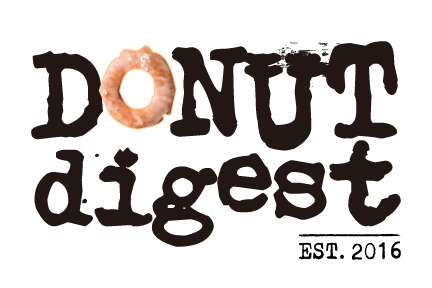Enhance Your Online Menu to Attract Customers and Drive Sales
In today’s digital age, an online menu is no longer just a convenience; it’s a necessity for any modern restaurant, especially within the quick-service world of bakeries, donut shops, and coffee shops. Your online menu often serves as the first interaction potential customers have with your establishment, heavily influencing their decision to order. Here, we’ll explore common mistakes bakery and donut shop owners make with their online menus and offer practical solutions to rectify these issues.
The Importance of Online Menus
Online menus are essential for making a great first impression. Since most customers check menus online before deciding where to eat, they expect the experience to be seamless and accurate. However, 85% of consumers report finding incorrect business information online. By offering an up-to-date menu with clear descriptions, prices, and high-quality images, you can encourage customers to order ahead and order more. Google even notes that businesses with more photos on their Google Business Profile receive more clicks, calls, and direction requests.
Ultimately, it’s about building trust, improving the customer experience, and boosting sales.
Common Problems with Online Menus
Despite their importance, many restaurants and bakeries fall into common traps when it comes to their online menus. Below are some of the most prevalent issues:
Accessibility Issues
The definition of accessibility is the quality of being easy to obtain and use. Poor accessibility with online menus can manifest itself in a few ways. Ask yourself, is your digital menu…
Hard to find
A hard-to-access online menu can severely impact your restaurant’s ability to attract and retain customers. If potential diners can’t easily find your menu, whether it’s hidden on your website or missing from essential platforms like Google Business Profile or TripAdvisor, you’re missing out on countless opportunities. Many people turn to these channels first when searching for a place to eat. Without your menu available across multiple platforms, you risk losing visibility and potential sales.
Hard to read
Once customers do find your menu, readability is key. Menus in outdated formats like PDFs or JPGs not only frustrate users but also hurt your search engine optimization (SEO). A menu that isn’t mobile-friendly or has images that lack alt text makes it inaccessible for visually impaired customers and hard to read by Google. This can push your bakery further down in search results, reducing the likelihood of attracting new patrons.
Hard to navigate
Even if customers can access and read your menu, too many choices or poor navigation can lead to decision fatigue. When your menu lacks clear categories or is overcrowded with options, it overwhelms diners, leading to what’s called the “paradox of choice.”
Hard to order
Finally, providing a seamless online ordering experience is crucial. Listing your menu isn’t enough; customers expect the convenience of pre-ordering directly from your site. Restaurants with easy-to-navigate menus and secure online ordering systems consistently see higher loyalty and sales.
Typical consequence for accessibility issues? No order at all. Instead you’ll drive customers to competitors who offer a better online experience.
Inaccuracies and Inconsistencies
Outdated or incorrect information, such as store hours, menu items, or pricing, can damage a bakery’s credibility or lessen the impulse to buy. Discrepancies across different platforms—like Google, Yelp, your website, social media—can further confuse customers. It’s essential to maintain uniformity and accuracy across all digital touchpoints to sustain a cohesive and reliable brand image.
Typical consequence? Bad reviews.
Poor Visual Appeal
The visual presentation of your menu can significantly impact customers’ decisions. No category headers, bad formatting, typos, lack of images, or low-quality photos can deter potential orders. An aesthetically pleasing menu that captivates customers visually is crucial for aligning the online representation with the quality of the food you offer.
Typical consequence? Lower ticket value.
Solutions and Best Practices
Addressing these challenges with actionable solutions can transform your online menu into an effective marketing tool:
🗓️ Update Regularly
Make frequent updates to ensure accuracy on menu items, pricing, and inventory. Your customers will thank you for it.
✨Highlight Specials & Popular Items
Showcase your latest limited-time offers, popular menu items, or even staff favorites with a dedicated menu section towards the top.
🍔 Use Descriptive Language
Make use of sensory language to bring your menu items to life and entice customers to order.
Use ChatGPT or Google’s Gemini to create an enticing description based on your item’s ingredients or prep process. Try this sample prompt: “My bakery has a [menu item name] that is part of our [category name] category. Based on the following ingredient list, come up with a menu item description that is both SEO-friendly and enticing: [enter ingredients]”
📸 Show Off
High-quality images (or even videos) of your food can be a powerful tool to showcase your menu and help customers make decisions.
🎉 Introduce Upsells
Offer modifiers, suggestive pairings, or related upgrades to increase sales and push your most popular items. For instance, pairing coffee with croissants, or upgrading that latte with a shot of vanilla.
🤖 Take Manual Work Off Your Plate
Invest in a menu management tool like Marqii so you can seamlessly update menu changes across the web from a single dashboard.
Where else should you manage your menu?
Third-party delivery
Check the menu accuracy across DoorDash, Uber Eats, Caviar, GrubHub, Postmates, etc. Many of these platforms will create a listing for you even if you don’t officially partner with them. If you do partner with 3PD, make sure you’ve got accurate items, descriptions, and prices. Don’t forget about those photos.
Social media
Share your menu in a variety of formats. Use Instagram Highlights, create Reels, or make TikToks that show behind-the-scenes footage of how your items are made. Remember, most social media users are there to be entertained, not to make a purchase. While you should always make it easy to order by adding links in your bio to your online ordering platform, and using the link feature in your stories, your main goal should be to educate, entertain, and inspire. By doing so, your bakery will stay top of mind when followers are craving dessert.
Need help?
If you’re ready to improve your online menus, but not sure where to start, I can help. Email info@donutdigest.com to get started.


